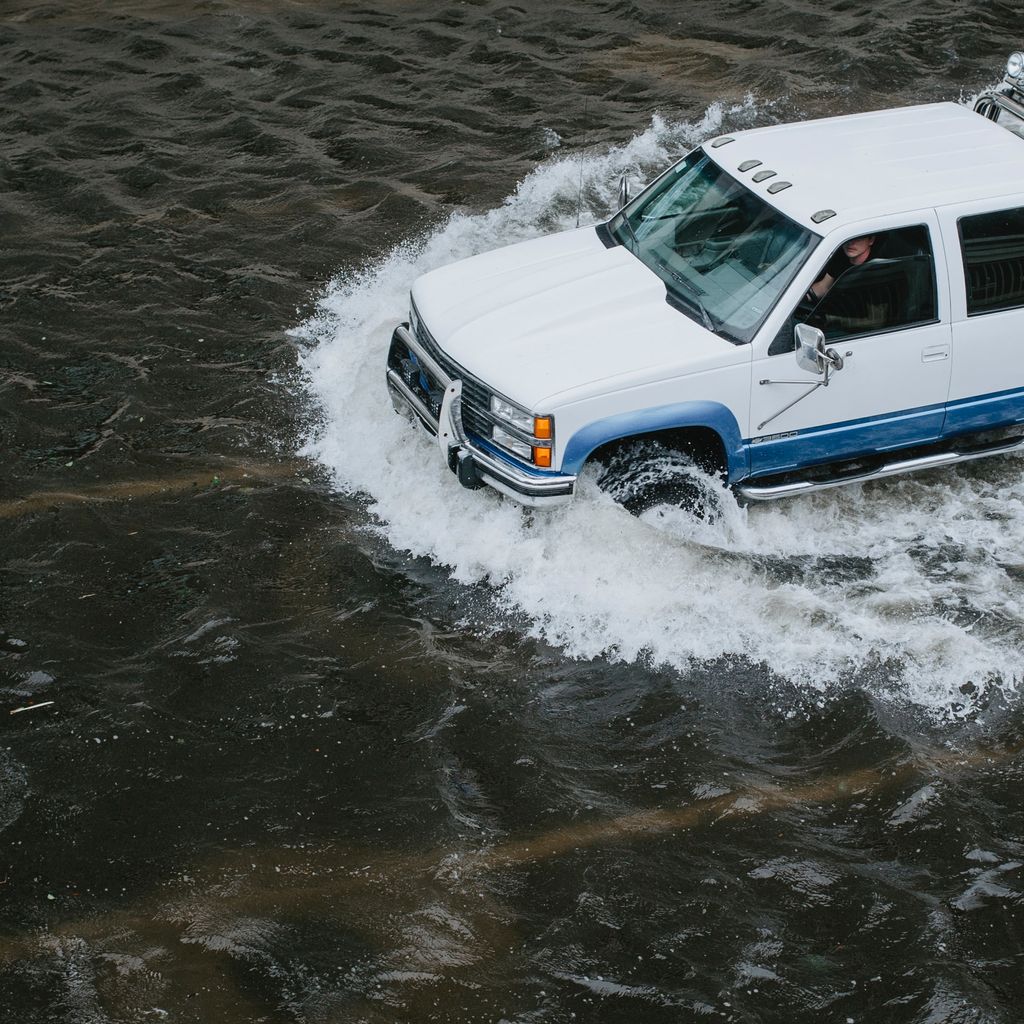Inspired for an Adventure? Check out Beef Stroganoff - Pouch and Beef Stew - Pouch
Free Ground Shipping On All Orders
Over 2,100 Reviews
Add description, images, menus and links to your mega menu
A column with no settings can be used as a spacer
Link to your collections, sales and even external links
Add up to five columns
Add description, images, menus and links to your mega menu
A column with no settings can be used as a spacer
Link to your collections, sales and even external links
Add up to five columns


For many of us, it’s a lot easier not to think about natural disasters than to prepare for them. After all, imagining the threats to life, limb, and property that can come with storms, floods, volcanic eruptions, and other catastrophes may overwhelm us with stress, even paralyze us with all-out fear.
But the good news is that undertaking natural disaster preparedness actually helps alleviate some of that anxiety. By putting together the proper supplies, making home disaster plans, and otherwise understanding what to do if an emergency strikes, you’re likely to feel that much more confident that you’ve got the tools and the skills to protect yourself and your family. And that means you’re less likely to feel a nagging sense of vulnerability.
In this post, we’ll run through some of the fundamentals of preparing and responding to a natural disaster when you’re at home. Much of the following information also applies to disaster preparedness away from home, as when you’re at a workplace or when you’re traveling, but there are some specifics here for a homebound person worth keying into.
The Importance of Home Disaster Planning & Types of Natural Events to Prepare For
An emergency—natural disaster or otherwise—can strike anytime. Home disaster preparedness is about setting yourself up so that you can respond immediately to this potentially very sudden danger and shift into action mode without scrambling to figure out what to do.
Every part of the U.S. is vulnerable to natural disasters. But some parts of the country are more vulnerable to certain kinds of natural disasters than others. An important element of preparing for natural disasters such as severe weather is understanding the nuts-and-bolts of those most likely to afflict your area. Contacting your local or state emergency-management office is a great first step in this regard.
Residents of California, for example, commonly face threats from wildfires, earthquakes, and drought. Iowans may more often contend with floods, thunderstorms, tornadoes, and winter storms. In Florida, flooding, thunderstorms, tornadoes, and hurricanes are habitual natural disasters. When considering only recent history or collective community memory, though, keep in mind that some natural disasters have a longer “return interval” in a given location than others. New Englanders may well deal with a hurricane in their lifetimes, even though such storms don’t impact that region as frequently as the Southeastern coast. And certain areas may not typically experience wildfires on a frequent basis, but the landscape may periodically (say, every hundred or two hundred years) go up in serious flame.
9 Things to Do for Home Natural Disaster Preparedness
The following tips don’t cover everything when it comes to emergency preparedness, but encompass a lot of the basics of readying yourself for when disaster strikes. At the end of this post we’ll link to some important authoritative resources you should definitely spend some time with, plus some additional Mountain House posts on the general subject of emergency readiness.
(1) Make a Disaster Kit
This is a cache of vital supplies and provisions that should see through at least 72 hours sheltering in your house (and ideally longer), whatever the specific emergency situation. Stock up on nonperishable food, drinking water, and medicine, plus other essentials such as a hand-crank or chargeable flashlight, battery-powered radio (ideally an NOAA weather radio), dust mask, first-aid kit, cell phone and charger, extra batteries, duct tape, and a map of the local area. Store important documents such as passports, birth certificates, social security cards, insurance papers, and the like in waterproof containers as part of your kit. Indeed, all emergency supply items should be kept in airtight plastic bags or small waterproof containers, then placed in one or two large and easy-to-carry bins or duffels. (Check out a complete list of emergency-kit essentials here at FEMA’s Ready.gov as well as in our Mountain House infographic breakdown!)
(2) Know How to Store Food & Water
As part of assembling a natural disaster preparedness kit, you want at least a three-day supply of both food and water, as we mentioned. But those provisions need to be stored properly to avoid spoilage, and you need to keep tabs on them periodically to make sure they’re still OK. Furthermore, flooding may render some stored food or water unsafe. Learn more about proper storage of emergency provisions here.
(3) Make an Emergency Plan
An emergency kit alone isn’t sufficient to get you ready for a natural disaster at home: You also need an emergency plan so that you and every other member of your household knows what to actually do in a SHTF situation. From identifying evacuation routes to coming up with a list of essential phone numbers, work together to produce a comprehensive disaster plan and practice how you’ll put it into action. (Learn more in this Mountain House blogpost.)
(4) Consider All Members of Your Household—Pets Included!
When you’re coming up with an emergency plan, make sure you’re considering the special needs and vulnerabilities of every household member. That might be an age-related physical limitation, for example, or a health condition requiring special medication or medical equipment. Fido, Fluffy, and any other pets need to be part of your planning, too—and essential supplies for them must be in your emergency kit.
(5) Know How to Shut Off Utilities
During or after a natural disaster, gas explosions are a real hazard. Make sure everybody in your household knows how to turn off the gas at the meter; the exact process can vary, so check with your gas utility so you know exactly how to do it. A wrench is often required. (Remember: Don’t actually shut off the gas when you’re just practicing—it should only be turned back on by a professional.) Everyone should also know where your home’s circuit panel is and understand how to shut off electricity to the house (doing so by first shutting off individual circuits, then the main). The same goes for water: A natural disaster may potentially render a municipal water supply unsafe to use, so you may need to shut off your home’s water supply. As part of your prepping, check the main valve to make sure it’s not too rusted to turn and that it’s not leaking; you may need to replace it.
(6) Stay Informed Before, During, and After a Natural Disaster
Amid the confusion and disruption of a natural disaster or other emergency situation, getting reliable information from reliable sources is all the more important. Make sure you can receive Wireless Emergency Alerts (WEAs) on your mobile phone, monitor local radio and TV stations for emergency alerts, and (as we’ve already covered) have a NOAA weather radio as part of your natural disaster preparedness kit.
(7) Prepare Your Home
There’s much you can do to make your home more resilient—and safer—in the face of a natural disaster. Inspect the house to identify any necessary repairs so it’s as secure as possible; weak points such as poorly insulated windows, broken hinges, or loose roof shingles can provide an avenue in for wind or water, plus create dangerous projectiles. In earthquake country, strapping down your water heater is a very good idea. Make sure essential access points such as around your circuit panel, your water shut-off valve, and designated shelter sites are kept clear and easy to reach.
(8) Stay Away From Floodwaters & Other Standing Water
Whether caused by river flooding, storm surges, heavy rain, or burst pipes, keep clear of standing water in and around your home during a natural disaster. It may be electrified, polluted, or full of hidden debris that could injure you.
(9) Keep Your Ride Gassed Up
Try to always have at least a half a tank of gas in your vehicles in case you do need to leave your home during or after a disaster and it’s temporarily impossible to fill up.
Closing Thoughts & Further Resources
We’ve provided some of a basic blueprint for home natural disaster preparedness; there’s a lot more to think about that goes beyond the scope of one blogpost. We highly recommend visiting Ready.gov, the federal government’s official emergency/disaster readiness website, for further information and such handy tools as printable disaster plans. The American Red Cross is another fine resource for emergency preparedness and emergency response. The “Emergency Prep & Survival” category of our Mountain House blog, meanwhile, has many other articles on the subject. Besides the ones we’ve already linked to, here are a few others to get you started:
- How to Prepare for a Flood: Emergency Flood Checklist
- Refreshing Your Storm Safety Savvy
- The Ultimate Hurricane Survival Kit Checklist
- How to Prepare for a Wildfire
- Planning for Long Term Power Outage
- How to Fit Emergency Planning Into Everyday Life
- Tips for Prepping in Limited Space
Meanwhile, look no further than our Mountain House emergency survival provisions for stocking up that disaster kit of yours!

How to Rotate Emergency Food: FIFO and Other Rotation Methods

The First 72 Is on You: Survival Kit Checklist + Printable PDF


Stay Hungry for Adventure
Sign Up for Delicious Outdoor Meals & Exclusive Offers!
By clicking ‘Join Now’, I agree to the Terms of Service and Privacy Policy.


Join the adventure
©2025 Mountain House — All Rights Reserved.
Your Cart is Empty
Continue ShoppingYour Cart
Subtotal
$0.00
EXPRESS PAYMENT METHODS AVAILABLE IN CHECKOUT
Taxes and Shipping Calculated at Checkout
Your ExpertVoice deal.
$[Deal Price]
$[Original Price]
Discount applied at checkout.
On sale now — lower than your ExpertVoice discount.
Not eligible for ExpertVoice discount.














